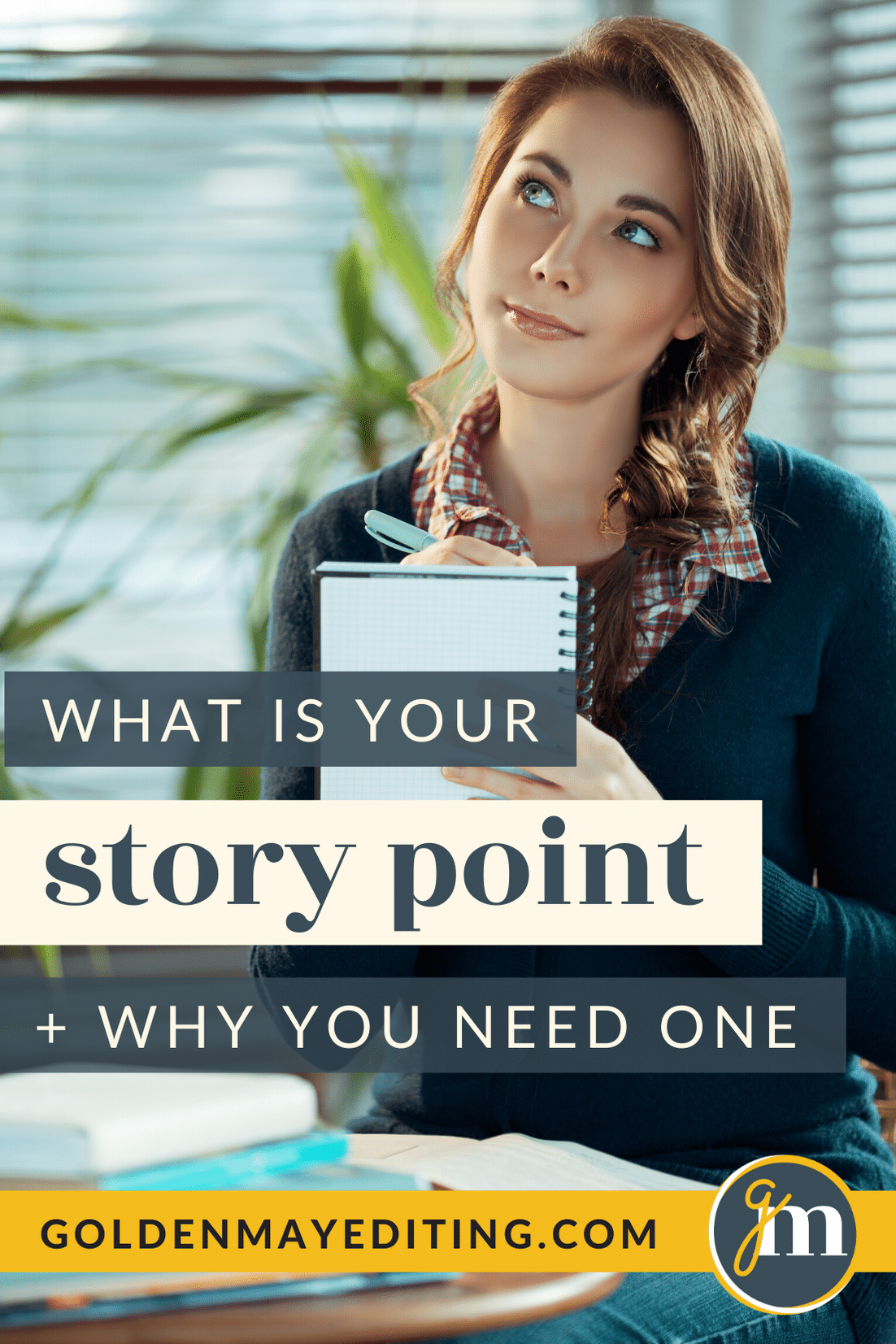This post/page contains affiliate links. We may receive a commission for purchases made through these links. Golden May will only ever recommend products or services that we fully stand behind! Thanks for your support.
A story that sticks with us is one with a strong point—a specific message about how the world works.
Stories with a strong point are the stories that grip our hearts and linger in our minds for years after we’ve read them. Why? Readers naturally look for a “takeaway,” whether consciously or not. When we read, we want to learn something, and what we learn is your message.
We cling to Harry Potter because of its message that “there are things worse than death, that love is worth fighting for.” Pride and Prejudice has survived generations because it teaches that “love can overcome the obstacles of class.” Recently, R.F Kuang’s The Poppy War stole hearts with its point that “destiny is a myth and we are fully responsible for our decisions, good and bad.”
All of these stories have a strong point, which readers internalize through the protagonist’s character arc. Readers want to learn from the protagonist’s journey, which means writers must consider the point they want their story to make (Read Lisa Cron’s Wired for Story for more info!).
Knowing your story point allows you to focus your vision and home in on how your main character is going to change. As they make decisions, overcome obstacles, experience consequences, succeed or fail, their journey of change should ultimately prove your point. This means that you need to know your point from the get go.
Lessons from Jane Austen on Using Your Story Point
Great stories prove their points through their main character’s arc or journey. It would be really boring (and presumptuous!) if authors always came right out and told us their points. Instead, create plot problems that force your character to confront their Internal Obstacle belief—the flawed misbelief or lie about how the world works that’s preventing them from achieving their goals. As they make poor decisions because of their internal obstacle belief and they reckon with the consequences of those decisions, they gradually change until ultimately, they prove they’ve learned the story’s point in the climax moment.
In Pride & Prejudice, Jane Austen does this masterfully. Elizabeth Bennet’s journey is in overcoming her prejudice of others, through her growing love of Darcy. Her climax moment is when she reads Darcy’s letter that opens her eyes to how ignorant her pride has made her.
Subplots should make or challenge your point. Austen does this with Darcy’s arc (toward overcoming his pride and loving Elizabeth despite her class), the Lydia and Wickham subplot (which shows how marriage can both endanger and save class status), the Jane and Bingley subplot (which shows how high expectations of women’s behavior can lead to misunderstandings about love—but ultimately love conquers), and the Charlotte and Collins subplot (which challenges the point by showing how loveless marriage can be practical).
Your world should reflect your point (and counterpoint). World building and magic systems can serve as metaphors for your message. While Pride and Prejudice doesn’t have magic, Austen brilliantly uses the world to illustrate her point. Every setting (from the Bennett’s house, to Netherfield balls, to Pemberley mansion) is specifically built to represent strict lines of class. The characters in these spaces represent and verbalize the prejudices that run up and down the class ladder.
When you deeply understand your point you can (and should) weave it in almost everywhere. Keep all elements of your story in conversation with your story point to maximize its effectiveness.
A Case Study: Conflicting Points
I once had a client who hadn’t given much thought to the point of her story, even though she’d been working on it for a long time. We talked through why she was writing her story and in doing so she realized something game-changing: While working on her story over a period of years, the point of her story had shifted.
This writer had started out writing a story about power dynamics: what happens when people with exorbitant amounts of power are tempted by corruption? Over time, however, the story had turned into an exploration of emotions—how the ability to interrogate one’s emotions, and empathize with those of others, is what makes a good leader.
Two totally different ideas, but she’d been trying to tell them both at the same time. Recognizing these conflicting ideas freed her from years of frustration. She is now committed to her new point and is deepening her main character’s arc by forcing her to make choices that bring her face to face with a fear of strong emotions. She has built a magic system that responds dangerously to emotions, in order to further test her main character.
Develop Your Point
Ask yourself these questions to begin developing your point:
- Where did this idea come from? What inspired it? What about the idea gripped you? Understanding the origin of this idea is the first step to homing in on your point and building cohesiveness through your story.
- Why this book? Spend some time thinking about why you want to write this story, why you’re dedicated to the time and energy that writing a book demands. What brings you back to the page, again and again? What is the core reason driving you to work on it?
To narrow down your ideas and begin crafting your story point, mine your answers to the above questions in order to tease out what lesson you want your readers to take away.
- What do you want your reader to learn? This lesson should come from your “why” answers above.
- Use all your answers from the question above to develop a single, one-line argument which reflects that lesson. The more specific your point, the stronger your character’s arc of change, and the more focused your story will become.
Once you’ve landed on an idea, use it as the foundation for your main character’s journey!
Want more guidance?
Our comprehensive outlining course, From Idea to Outline, teaches you how to develop a story point and use it to craft a solid outline that sets your story up for success. As one of the pillars of our Tenacious Writing program, the course will take you deeper through each step of crafting a strong story point and then teach you how to tie it back to character arcs, plot events, worldbuilding, and more. Join Tenacious Writing today and get immediate access. Never feel overwhelmed or lost with plotting again!








I would like to read your “Unearth Your Story Point” guide, but the links on this page only lead to an image of your guide with no way to read or download it.
Hey Beth! We’ve removed our store of guides and made them exclusive to our Tenacious Writers Society members. We’re still in the process of updating our blog posts to remove all the links. So sorry for the confusion. If you’d like to access our longer guide resources, we’d love have you join the community!